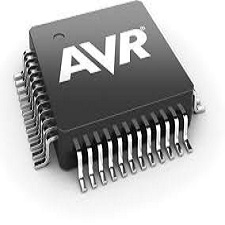توضیحات
ABSTRACT
We address the problem of compressing large and distributed signals monitored by a Wireless Sensor Network (WSN) and recovering them through the collection of a small number of samples. We propose a sparsity model that allows the use of Compressive Sensing (CS) for the online recovery of large data sets in real WSN scenarios, exploiting Principal Component Analysis (PCA) to capture the spatial and temporal characteristics of real signals. Bayesian analysis is utilized to approximate the statistical distribution of the principal components and to show that the Laplacian distribution provides an accurate representation of the statistics of real data. This combined CS and PCA technique is subsequently integrated into a novel framework, namely, SCoRe1: Sensing, Compression and Recovery through ON-line Estimation for WSNs. SCoRe1 is able to effectively self-adapt to unpredictable changes in the signal statistics thanks to a feedback control loop that estimates, in real time, the signal reconstruction error. We also propose an extensive validation of the framework used in conjunction with CS as well as with standard interpolation techniques, testing its performance for real world signals. The results in this paper have the merit of shedding new light on the performance limits of CS when used as a recovery tool in WSNs.
INTRODUCTION
THE area of communication and protocol design for Wireless Sensor Networks (WSNs) has been widely researched in the past few years. One of the first studies addressing the problem of efficiently gathering correlated data from a wide network deployment is , which highlights the interdependence among the bandwidth, the decoding delay and the routing strategy employed. Under certain assumptions of regularity of the observed process, the authors claim the feasibility of large-scale multi-hop networks from a transport capacity perspective. Classical source coding, suitable routing algorithms and re-encoding of data at relay nodes have been proposed as key ingredients for joint data gathering and compression. In fact, WSN applications often involve multiple sources which are correlated both temporally and spatially. Subsequent works such as proposed algorithms that involve collaboration among sensors to implement classical source coding (e.g., see ) in a distributed fashion New methods for distributed sensing and compression have been developed based on the recent theory of Compressive Sensing (CS) .
چکیده
ما در مورد مشکل فشرده سازی سیگنال های بزرگ و توزیع شده نظارت شده توسط شبکه حسگر بی سیم (WSN) و بازیابی آنها از طریق مجموعه ای از تعداد کمی از نمونه ها صحبت می کنیم. ما یک مدل اسپاریتیسی ارائه می دهیم که امکان استفاده از حسگر فشرده سازی (CS) برای بازیابی آنلاین مجموعه های داده بزرگ در سناریوهای واقعی WSN را فراهم می کند و از تجزیه و تحلیل مولفه اصلی (PCA) برای گرفتن ویژگی های مکانی و زمانی سیگنال های واقعی استفاده می کند. تجزیه و تحلیل بیزی برای تقریب توزیع آماری مولفه های اصلی و نشان دادن آن است که توزیع لاپلاس به صورت دقیق از آمار داده های واقعی ارائه می شود. این روش ترکیبی CS و PCA متعاقبا در یک چارچوب جدید، یعنی SCoRe1: حساسیت، فشرده سازی و بازیابی از طریق برآورد ON-line برای WSNs، یکپارچه شده است. SCoRe1 قادر است به طور موثر خود سازگار با تغییرات غیر قابل پیش بینی در آمار سیگنال به لطف یک حلقه کنترل بازخوردی که در زمان واقعی خطای بازسازی سیگنال را تخمین می زند. ما همچنین اعتبار گسترده ای از چارچوب استفاده شده در ارتباط با CS و همچنین با تکنیک های استاندارد اینترپل ارائه می دهیم، و عملکرد آن را برای سیگنال های واقعی جهان تست می کنیم. نتایج در این مقاله شایستگی رها شدن نور جدید بر روی محدودیت های عملکرد CS در هنگام استفاده به عنوان یک ابزار بازیابی در WSN ها می باشد.
مقدمه
منطقه حوزه ارتباطات و پروتکل طراحی شبکه های حسگر بی سیم (WSNs) در چند سال گذشته به طور گسترده مورد بررسی قرار گرفته است. یکی از اولین مطالعاتی که در مورد مشکل جمع آوری داده های متقابل از یک استقرار گسترده شبکه انجام شده است، نشان دهنده وابستگی متقابل بین پهنای باند، تاخیر رمزگشایی و استراتژی مسیریابی است. نویسندگان ادعا می کنند که امکان دستیابی به شبکه های چند منظوره در مقیاس بزرگ از منظر ظرفیت حمل و نقل، تحت فرضیه های خاصی از منظر روند مشاهده شده است. کدگذاری منبع کلاسیک، الگوریتم های مناسب مسیریابی و دوباره رمزگذاری داده ها در گره های رله به عنوان مواد کلیدی برای جمع آوری داده ها و فشرده سازی مشترک پیشنهاد شده است. در حقیقت، برنامه های WSN اغلب شامل چندین منبع هستند که هم زمانی و هم فضایی همبستگی دارند. آثار بعدی مانند الگوریتم های پیشنهادی که شامل همکاری در میان سنسورها برای اجرای کدگذاری منبع کلاسیک (به عنوان مثال، نگاه کنید) در یک روش توزیع شده، روش جدید برای سنجش و فشرده سازی توزیع شده بر اساس نظریه اخیر فشرده سازی (CS) ایجاد شده است.
Year: 2012
Publisher : IEEE
By : Giorgio Quer , Riccardo Masiero , Gianluigi Pillonetto, Michele Rossi, and Michele Zorzi
File Information: English Language/ 15 Page / size: 646 KB
Only site members can download free of charge after registering and adding to the cart
سال : 1391
ناشر : IEEE
کاری از : جورجیو کوئر، ریکاردو ماسیرو، جیانلوجی پیلونتو، میشل روسی و میشل زرزی
اطلاعات فایل : زبان انگلیسی / 15 صفحه / حجم : KB 646


![Sensing, Compression, and Recovery for WSNs[taliem.ir]](https://taliem.ir/wp-content/uploads/Sensing-Compression-and-Recovery-for-WSNstaliem.ir_-1.jpg)
![The Electricity Situation in Ghana[taliem.ir]](https://taliem.ir/wp-content/uploads/The-Electricity-Situation-in-Ghanataliem.ir_.jpg)




![Energy efficient hybrid adder architecture[taliem.ir]](https://taliem.ir/wp-content/uploads/Energy-efficient-hybrid-adder-architecturetaliem.ir_-1-150x150.jpg)
نقد و بررسیها
هنوز بررسیای ثبت نشده است.